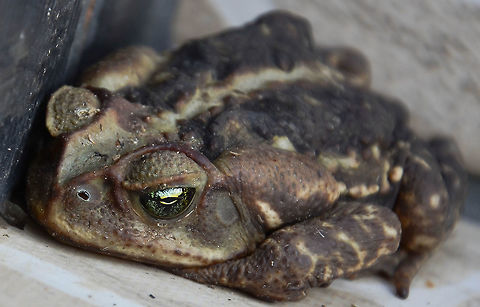
Appearance
''Rhinella icterica'' are relatively large, stout-bodied toads. Males measure 100–166 mm and females 135–190 mm in snout–vent length. The parotoid glands are strong, as are the cephalic crests. The dorsum is yellowish in females and juveniles, with a light midline stripe and a regular pattern of black blotches; in the males the colouration is often a bright greenish yellow, with only a few black blotches. The belly is white and marbled with brown. The skin is scattered with blunt, thorny warts, especially in the males.Status
This common toad occurs in a large range of habitats, from forests to open habitats such as Cerrado savanna, and including disturbed habitats. Breeding takes place from August to January in permanent and temporary ponds and streams. It is an adaptable species that also occurs in many protected areas, and is not considered threatened.Habitat
This common toad occurs in a large range of habitats, from forests to open habitats such as Cerrado savanna, and including disturbed habitats. Breeding takes place from August to January in permanent and temporary ponds and streams. It is an adaptable species that also occurs in many protected areas, and is not considered threatened.References:
Some text fragments are auto parsed from Wikipedia.